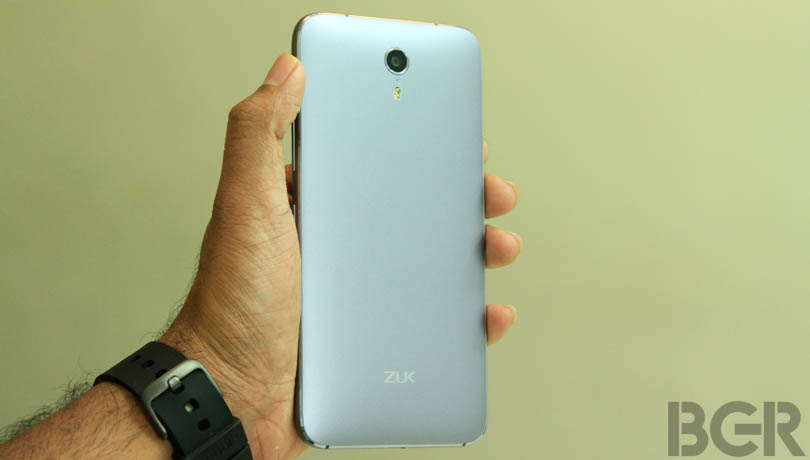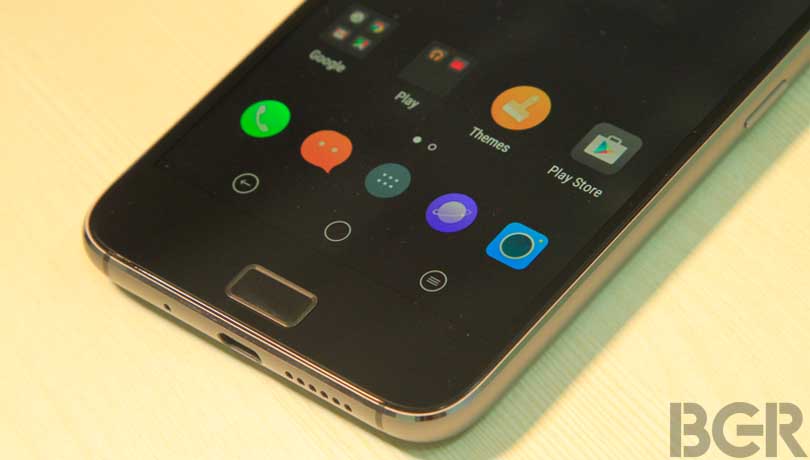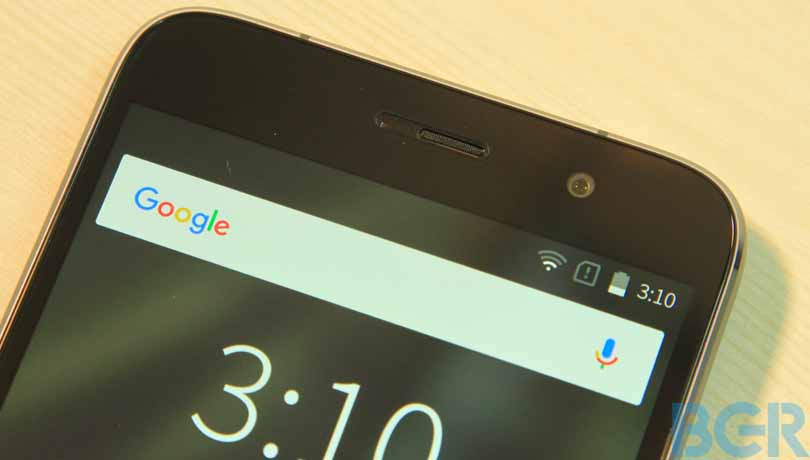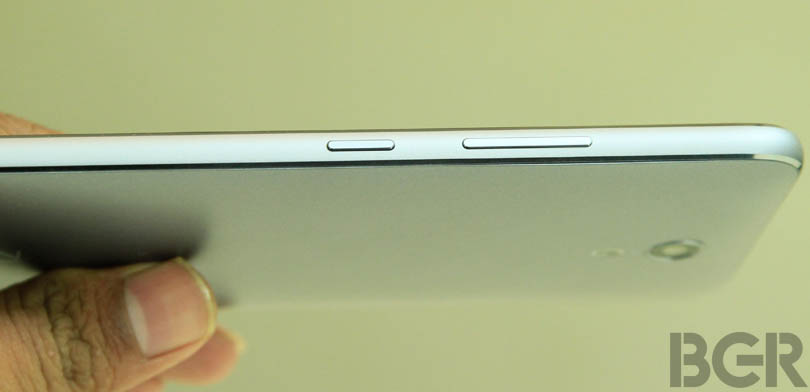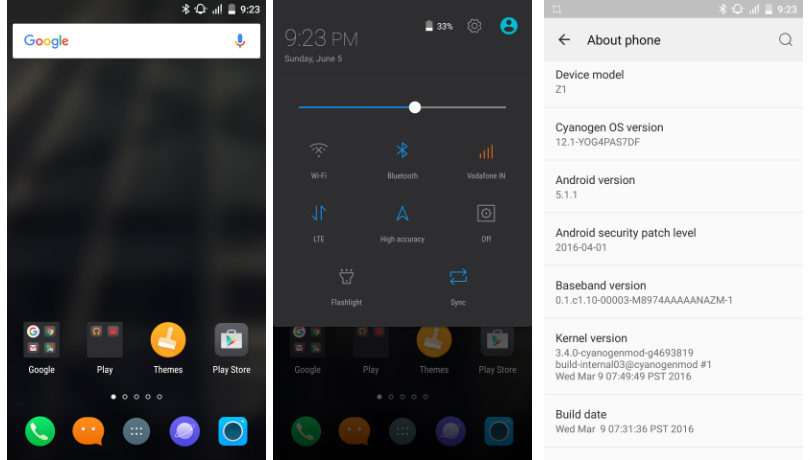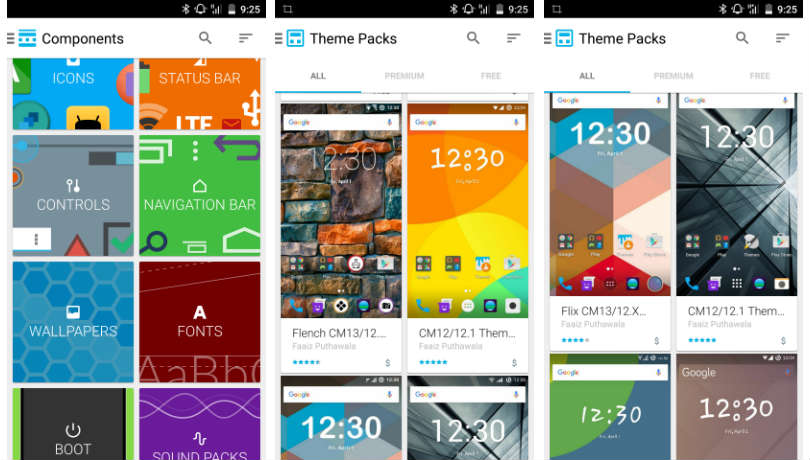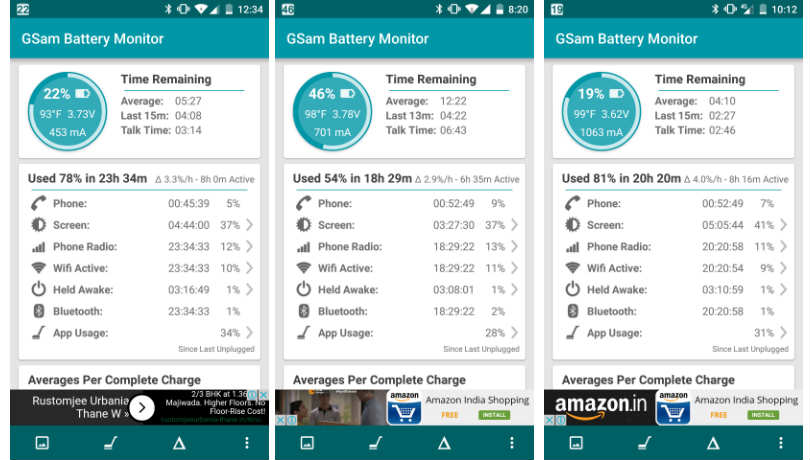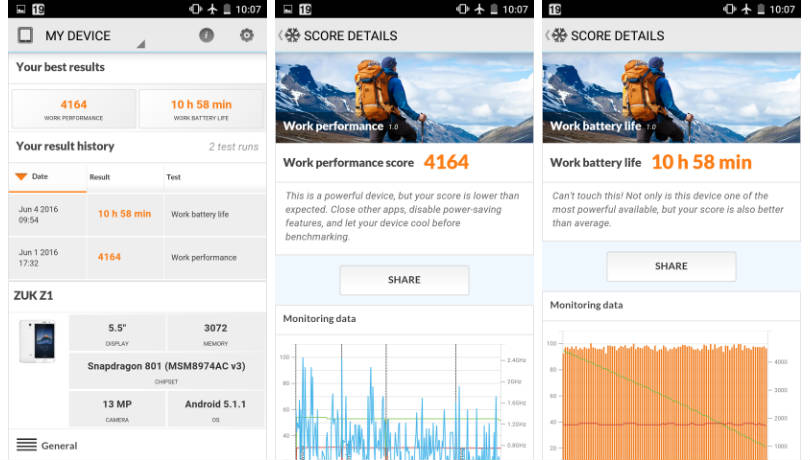
Powerful hardware and well optimized CyanogenOS offers a smooth and impressive performance, making the Lenovo ZUK Z1 a must consider option in the mid-range segment.
Off late, Lenovo has been on a roll with a number of winning smartphones, which includes the likes of the Lenovo K3 Note, the Vibe S1, the Vibe X3, the K4 Note and the recently launched Vibe K5 Plus. Lenovo also has two other brands under its umbrella – Motorola, which it acquired from Google in 2014, and ZUK, the online-only brand to take on the likes of Xiaomi and YU among others. The ZUK Z1 is the brand’s first smartphone which was launched in China last year, and now launched in India too.
Priced at Rs 13,499 and available exclusively via Amazon India, the Lenovo ZUK Z1 packs good hardware in its price range. One of the key highlights of the smartphone is that it runs on CyanogenOS, which was previously exclusive to Micromax sub-brand YU. It is also the first smartphone under Rs 13,500 range to boast a 13-megapixel camera with optical image stabilization. After using the ZUK Z1 for close to two weeks, here is the detailed review.
Design and build
Smartphones with metal frame and unibody design are becoming a common these days, and the ZUK Z1 is no different. With diamond-cut chamfered edges and slightly curved back, it feels a little heavy, yet solid and sturdy when you hold it. Up front you have the sensors, earpiece and the selfie camera located placed above the display and a physical home button below it. Besides this button, you have two capacitive buttons – back and app switcher. Under settings, you also get an option to activate the on-screen buttons for home, app switcher and back, if you want.
The home button also doubles as a fingerprint scanner for biometric authentication. Users can configure up to five fingerprints and the reader is quick and accurate too. It may not be the fastest fingerprint scanner like most manufacturers claim, but unlocks the smartphone in less than two seconds. Turn to the back and you have a thick and non-removable plastic covers that hides the battery. Up top is the camera sensor with LED flash, whereas the bottom has the ZUK branding.
Coming to buttons and ports, you have dual SIM card tray on the left edge – it only accepts nano SIM cards. On the right edge, you have the volume rocker and power buttons – both of which are easily accessible. The 3.5mm audio port is placed on the top, whereas the bottom has the USB Type-C (Version 3.0) port, speaker grille and opening for the mic. One advantage of the new USB Type-C port is that fact that it is a reversible connector, meaning you don’t have to worry about which side is upside down. The plastic strips for antenna bands are intelligently placed across the top and the bottom edge, which also helps to offer a clean back design.
Display and screen quality
The ZUK Z1 houses a 5.5-inch full HD (1080p) display with pixel density of 401ppi and brightness that can notch up to 450 nits. The screen is very sharp and viewing angles are good too. The color reproduction of the display is also pretty good, and the content – be it movies, games or photos, look lively. The whites look bright and the black levels are deep too. And while it may not be as punchy as the AMOLED display, it’s pretty good for its price tag.
Lenovo has also included adaptive brightness and LiveDisplay under settings display settings, which is a part of Cyanogen. While legibility under direct sunlight was no problem, I had issues with the ambient light sensor. It takes more than five to seven seconds or more to adjust the display brightness. I often found myself manually tweaking the brightness levels. The LiveDisplay setting is a good addition, which automatically adjusts the color temperature of the screen depending on the time of the day. At night, it adds a yellow tint to the screen to ensure the display doesn’t strain your eyes.
Hardware
At the heart of the Z1 runs Qualcomm’s Snapdragon 801 quad-core processor clocked at 2.5GHz paired with 3GB of RAM and Adreno 330 GPU. Some may argue that the processor is almost two years old, but it is important to note that it had been the flagship one of its time. Unlike the Snapdragon 810 that was flawed with thermal issues, the Snapdragon 801 is pretty stable, and has powered some of the smartphones such as the HTC One M8, LG G3, Xiaomi Mi 4 and the Samsung Galaxy S5 among others.
The Z1 has 64GB of onboard storage and there is no option for expandable storage, but I assume it should be enough for storing your favorite music, videos, some movies, games and apps. On the connectivity side, you get 4G LTE on both SIMs, Bluetooth 4.1, GPS and dual-band Wi-Fi 802.11ac
CyanogenOS
One of the key talking points of the ZUK Z1 is that it runs on Android 5.1.1-based CyanogenOS, which most of geeks who often flash their smartphones with custom ROMs would be accustomed to. While it doesn’t let you tweak as much as CyanogenMod, you still get a lot of customization options. The smartphone is also expected to get the Android 6.0 Marshmallow update.
In terms of customization, you get the themes app where you can download plenty of free and paid themes to instantly change the appearance and interface of your smartphone. That’s not all; you get to customize every aspect of the theme, right from wallpaper, icons, fonts and status bar to boot animation and more. CyanogenOS also includes double-tap to wake the screen.
Thankfully, Lenovo hasn’t loaded any bloatware apps and you just get the Google suite of apps pre-installed. CyanogenOS also gets TrueCaller integration built within the OS. So, every time you get a call from unknown numbers, it will pickup from the database and let you know who’s calling.
Performance
Together with Snapdragon 801 processor, 3GB of RAM and well optimized CyanogenOS, the ZUK Z1 offers a very fluid and snappy experience. During my two weeks of usage, I never came across any lag of sorts. Right from the app drawer to switching between apps and more, the whole experience is smooth as butter.
Multimedia
The smartphone comes with Google Play music and it supports playback of popular audio formats, such as MP3, AAC, Wav and FLAC. As a part of CyanogenOS, Audio FX music equalizer is also present which lets you tinker around with the audio listing experience. With a good pair of headphones, audio listening experience is pretty good. It offers a decent mix of bass and treble, along with a detailed output. However, the speaker isn’t that great. It is loud from the output point of view, but the details aren’t clear and it sounds muffled. This is the same even with high-quality MP3 files encoded in 320kbps and FLAC files too.
The built-in video player is pretty simple and plays a wide range of formats. The smartphone was able to play HD (720p) and full HD (1080p) videos without any lag or stutter. Even the Blu-ray movie rip that weighs over 2GB in size played smooth as butter. I also transferred some 4K video clips, and had no problems playing them either.
Gaming
The gaming performance on the ZUK Z1 is pretty good. I had no issues playing casual games such as Temple Run 2, Angry Birds, Subway Surfers and Benji Bananas. Even some graphics intense games such as Asphalt 8: Airborne, N.O.V.A 3 and Modern Combat 5: Blackout ran smoothly without any visible stuttering. However, I did notice some thermal heating around the top of the frame. It gets warm quickly, even with five minutes of game time, but it doesn’t feel uncomfortable to hold even after 30 minutes of continuous gaming.
Cameras
The Z1 is equipped with a 13-megapixel rear camera of aperture f/2.2. Lenovo has used the Sony IMX214 sensor which is the same that was used in other popular smartphones such as the Xiaomi Mi 4, OnePlus One and Oppo Find 7 among others. The camera also features OIS (optical image stabilization), which is something that is commonly found in high-end smartphones. This also makes the ZUK Z1 one of the most affordable smartphones with OIS.
The smartphone comes with stock Cyanogen camera app which is very snappy and has a neat and clutter free interface. Focusing takes about a couple of seconds and it takes another two seconds to capture the photo and save it in the library. While this isn’t pretty quick, I can’t complain much considering its price tag. I did notice the back and side of the frame getting a little warm when using the camera app for a little over five minutes.
I used the camera to capture photos in different lighting conditions, and while the quality isn’t mind blowing, is surprisingly good compared some smartphones in its price range. Photos shot in bright outdoor light look good and the camera is able to capture enough details. Under low lighting conditions, some noise is visible, but that is something that is expected. One thing I would like to point out is that even though it has auto-focus, it’s better to tap and focus once before clicking the photo, otherwise it may come out blurry. The OIS does help to compensate the shaky hand moments to an extent, and but as I said, it works the best when you first tap to focus.
The 8-megapixel selfie camera is pretty good and captures good and detailed photos outdoors and under good lighting conditions. Under artificial lighting conditions, the camera offers a decent performance. However, at times, some graininess is noticeable in the photos.
The primary camera supports full HD video recording, and both the recording quality and playback is pretty smooth. It also supports timelapse videos, slow motion and high-speed motion video recording at 60fps. I tried all these modes and was impressed with the output. The front-facing camera also supports video recording at full HD (1080p) resolution and it’s pretty impressive too.
Battery
When you have a smartphone equipped with a powerful hardware, it does take a toll on its battery life. Luckily, that isn’t the same with the ZUK Z1. Together with proper OS optimization and the massive 4,100mAh battery, it is good enough to last throughout the day and even more (a lot of this depends on your usage). Under battery settings option, you get to choose between three modes – power saver, balance and performance. I had always been using the Z1 in performance mode.
With my usual daily usage, I was able to squeeze out nearly five hours of screen on time or more. My usage included – Bluetooth turned on all the time, connected to a smartwatch and wireless headset; three email accounts in sync; brightness set at 60 percent; almost an hour worth of phone calls; and Wi-Fi, GPS and 4G LTE connected all the time. My usage also included an hour worth of gaming and music each; watching a couple of YouTube videos in full HD; WhatsApp and Messenger chats for over two hours.
The ZUK Z1 also supports fast charging feature and the bundled 2.5A charger takes the 4,100mAh battery from 0-100 percent is about two hours. I also ran PC Mark’s work battery life test which plays certain tasks on loop with screen on continuously. The benchmark ran for 10 hours and 58 minutes, with 20 percent battery to spare.
Verdict
Similar to other Lenovo smartphones, the company once again has a winner on its hands. The ZUK Z1 is aggressively priced, features a well built and sturdy design and runs on a well-optimized CyanogenOS that doesn’t show any signs of stutter, even with heavy usage. Also on the offer is a good and capable camera, 64GB of storage, flagship hardware and battery life that could easily let you sail through the day, even with heavy usage.
Combine all this with the performance and the overall package is something that is difficult to find on a sub Rs 15,000 smartphone. If you’re looking for a good smartphone that’s bang on budget and offers a good performance, the Lenovo ZUK Z1 should be in your list. Other alternatives could be the Xiaomi Redmi Note 3, which had impressed us with its overall performance, except the camera. The LeEco Le 1s, on the other hand, offered a decent performance, albeit an iffy battery life.
Source: bgr.in

